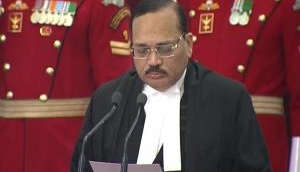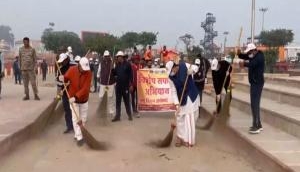
The Supreme Court today dismissed the Centre's curative plea which asked for capital punishment for three of Rajiv Gandhi's assassins, Santhan, Murugan and Perarivalan. The counsel for the government, Solicitor General Ranjit Kumar, put forth the following argument in his client's favour: 'our former prime minister was killed by these people. There was a conspiracy to kill him in which foreign nationals were also involved. What mercy could be shown to them?'
The bench comprised Chief Justice HL Dattu and Justice Fakkir Mohamed Ibrahim Kalifulla, Justice Pinaki Chandra Ghose, Justice Abhay Manohar Sapre and Justice Uday Umesh Lalit.
Power of remission
The bench was to decide whether the decision against a death sentence also allows room for remittance in a case of life imprisonment awarded by a lower court. The Tamil Nadu government, represented by Rakesh Dwivedi, wanted the assassins freed.
The Centre challenged this decision. This led to the debate on who has the right to remittance in such a case. The matter is currently listed in the Seventh Schedule in the Constitution and it is being debated whether it falls under the Concurrent or the State List.
There was also to be a decision on the extent of the claim a convict can make when it comes to life imprisonment.
The Assassination
Former prime minister Rajiv Gandhi, son of Indira Gandhi, was assassinated by a female member of the LTTE on 21 May, 1991 at Sriperumbudur in Tamil Nadu. There were 14 victims in all, including a photographer whose camera film caught the bomb blast.
People in question
It later emerged that the suicide attack was in retaliation to the presence of the Indian Peace Keeping Forces in Sri Lanka. The main accused was Thenmozhi Rajaratnam alias Dhanu, a member of the LTTE.The LTTE's role in the assassination was established by investigations by the CBI and the Supreme Court. The CBI also pointed to the DMK's role in the plot, convinced that the militants were given a safe haven in the state. The state then was put under President's Rule.
The SIT filed a chargesheet against 41 people under TADA.
The timeline
January 1998: The TADA court sentences 26 accused to capital punishment.
January 1999: In an appeal to the Supreme Court, the death sentence of four accused, Murugan, Santhan, Perarivalan and Nalini, was upheld by the SC. The others were given life imprisonment.
October 1999: The four accused appealed to the Tamil Nadu Governer, who rejected their plea.
2000: The state government, headed by M Karunanidhi, advised the Governer to commute Nalini's death sentence. The state government also passed the mercy plea of the other three convicts to the President. The President rejected the mercy petition and the three moved the HC, challenging the order.
May 2012: All mercy petitions were transferred to the SC.18 February 2014: The court commuted the death sentences of Santhan, Murugan and Perarivalan to life imprisonment on grounds of 'inordinate and unreasonable delay' by the Centre in deciding their mercy plea. The state government threatened to set the four free when they had served 20 years of prison time.
20 February, 2014: The Centre stayed the freedom of Santhan, Murugan and Perarivalan. The release of Nalini, Robert Pious, Jayakumar and Ravichandran was stayed due to 'procedural lapses'.
July 2015: The Centre used parens patriae as its argument to demand the death penalty for the killers. This means that the State, which yields political power, has the responsibility of protecting its citizens. Prime Minister Narendra Modi made a statement recently that the killers of Rajiv Gandhi should not be spared.







![BJP's Kapil Mishra recreates Shankar Mahadevan’s ‘Breathless’ song to highlight Delhi pollution [WATCH] BJP's Kapil Mishra recreates Shankar Mahadevan’s ‘Breathless’ song to highlight Delhi pollution [WATCH]](https://images.catchnews.com/upload/2022/11/03/kapil-mishra_240884_300x172.png)

![Anupam Kher shares pictures of his toned body on 67th birthday [MUST SEE] Anupam Kher shares pictures of his toned body on 67th birthday [MUST SEE]](https://images.catchnews.com/upload/2022/03/07/Anupam_kher_231145_300x172.jpg)






